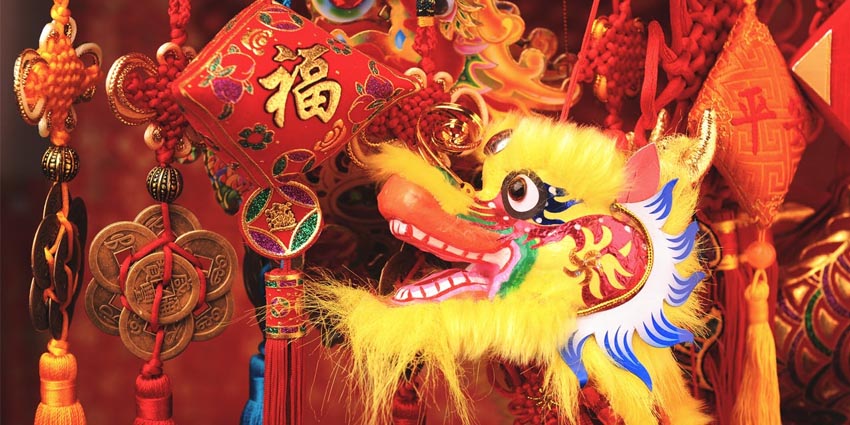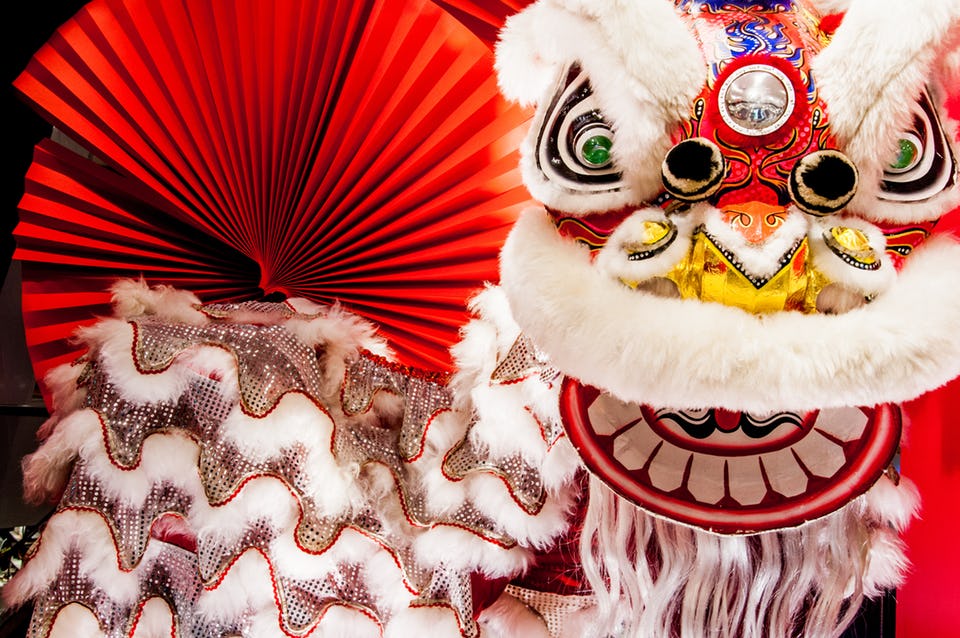sourcing from chinesenewyear
We’re all familiar with myths, legends and fairytales. It’s always interesting to see how they explain traditions that we still have in modern society today—the things we feel are normal, but are actually quite weird if we think about it.
So why do the Chinese celebrate the Spring Festival (Chinese New Year) the way they do? Why do people put up red decorations and light firecrackers? Who chose the 12 Chinese zodiacs? What‘s the point of malt candy?
The stories date back to thousands of years ago. Here is a collection of a few popular and interesting Chinese New Year myths.
The Monster and New Year’s Eve
In ancient times, there was a monster named Nián (年). It usually lives at the bottom of the sea and comes up once a year to feast on animals and humans. On this day, the villagers would all escape into the mountains.
One year, a beggar came to seek shelter, but everyone was hurrying away. Only an old woman took him in and he promised to chase Nian away. He busied himself with decorating the homes.
At midnight, Nian lumbered in but stopped short when it saw the red paper on the doors. As it roared in anger, firecrackers suddenly sounded and it trembled in fear. When it saw the beggar, dressed in red, laughing at it, it could only run away.
The villagers came back the next day and were pleasantly surprised that the homes were all still standing. They realized that loud noises and the color red were Nian’s kryptonite.
This is why, on New Year’s Eve, families eat dinner in their homes fortified by red decorations. At midnight, firecrackers are sounded. In addition, people will wear new and festive red clothing to celebrate.
At midnight, Nian lumbered in but stopped short when it saw the red paper on the doors. As it roared in anger, firecrackers suddenly sounded and it trembled in fear. When it saw the beggar, dressed in red, laughing at it, it could only run away.
The villagers came back the next day and were pleasantly surprised that the homes were all still standing. They realized that loud noises and the color red were Nian’s kryptonite.
This is why, on New Year’s Eve, families eat dinner in their homes fortified by red decorations. At midnight, firecrackers are sounded. In addition, people will wear new and festive red clothing to celebrate.
Evil Spirits and Poetry
One of the red decorations that Chinese people love is Spring Festival couplet poems (春联—chūn lián). They are pasted on both sides of the doorframe. And Nian isn’t the only monster that these poems protect you against!
More specifically, they guard against demons who wander around the human world at night looking for trouble. They must return to the underworld at dawn. Two gods guard the entrance, which is under a giant peach tree. Any demons that harmed humans during the night would be seized and fed to the tigers.
To safeguard their homes, people began to carve the gods’ names into peach wood tablets. By placing them outside their doors, they were able to scare the demons away.
Fortune has Arrived!
Another decoration is calligraphy. The most common word is fú (福), meaning happiness or fortune. But you’ll rarely see it upright.
It is said that in the Ming dynasty, the Emperor ordered every household to decorate by pasting fu onto their doors. On New Year’s Day, he sent soldiers to check. They found that one illiterate family pasted the word upside down.
The Emperor ordered the family to be punished by death. Thankfully, the Empress was there and came up with an explanation: “Upside down” (倒—dào) is a homophone of “here” (到—dào). When it’s upside down, it means that fu is here.
The explanation made sense to the Emperor and he set the family free. From then on, people would hang the word upside down, both for fortune and in remembrance of the kind Empress.

Dumplings and Ears
Some people say that dumplings are shaped like gold and silver ingots. Others say they look like ears.
That may be due to a myth about the goddess Nǚwā (女娲).
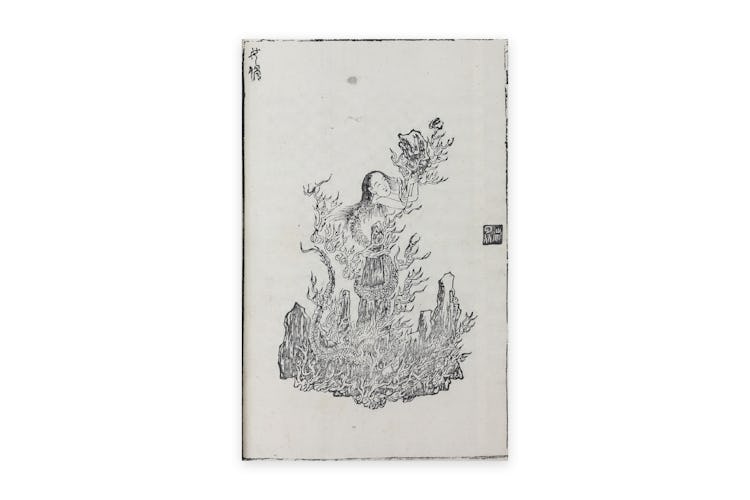
She created humans out of yellow clay. But she realized that the ears would freeze and crack off in the winter. To solve this problem, she sewed the ears in place and put the end of the thread in the humans’ mouths.
Later, to thank Nǚwā, people molded dough into the shape of ears. They then stuffed it with meat and vegetables rather than thread.
So next time your ears are so cold you think they’ll fall off, be glad they won’t and eat some dumplings!
Origin of Spring Festive Wine
There are some drinks specific to the Chinese New Year. One of them is Tusu wine (屠苏酒—Tú sū jiǔ).
In one story, there was a plague going through villages, taking many lives. A man put some herbs, leaves and grains into bags. He brought one to each of his neighbors, telling them to soak the bag in water.
They were to drink the water on New Year’s Day. And they found that this magical drink saved them from the plague. It became known as Tusu wine, named after the Tusu-structured home of the man.
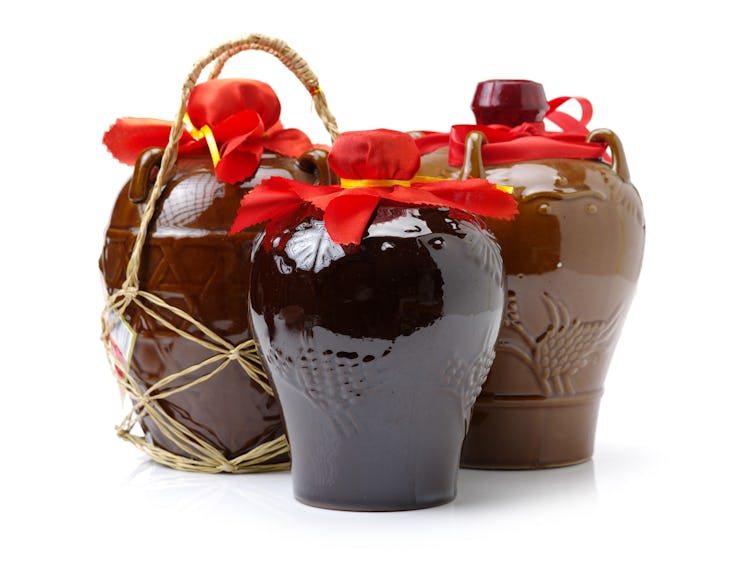
No one knows if this story is true, but wine is often used as a part of traditional Chinese medicine. And it won’t hurt to take a sip of this rich drink during the holidays!
Origin of Red Pockets
According to legends, there used to be an evil spirit named Sui (祟). It would appear on New Year’s Eve and pat the heads of sleeping children three times. The children would end up with a fever. Even if they recovered from the fever, they’d never be the same again.
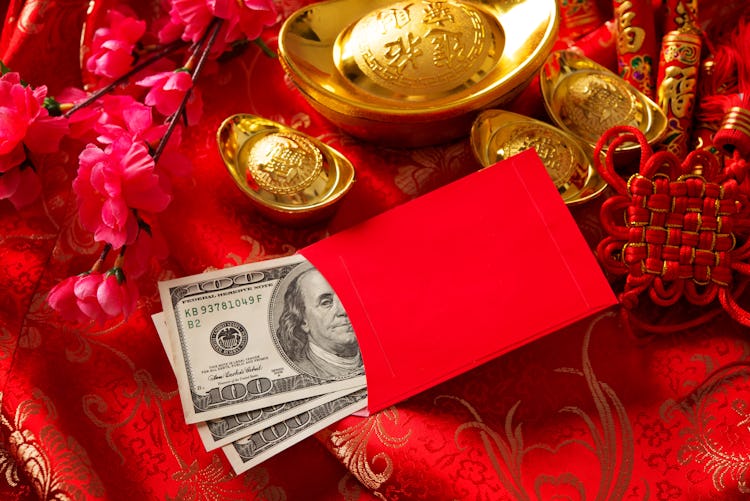
One couple entertained their child with some coins at night. When he fell asleep, they placed the coins on red paper and left it by the pillow. When Sui came, the coins flashed and frightened it away. From then on, parents would give children money wrapped in red paper every New Year’s Eve. Read our full article on red pockets to learn more about their origin, history and how much to put in one.
The Stove God and Candy
The Stove God (灶神—zào shén) is in charge of people’s meals and livelihoods. He’s one of the gods that interact with humans the most.
On the little new year (小年—xiao nián) before the official “big” New Year (大年- dà nián), he returns to the heavens. The Stove God reports to the Jade Emperor (玉帝—yù dì), telling him how each family was during the year. He later returns to Earth to either bless or punish the families, as ordered by the Jade Emperor.
This is why families will make malt candy gourds and leave it out at night (kind of like cookies for Santa Claus).
The candy will sweeten the Stove God’s mouth so he’ll only praise the family. It can also stick his teeth together, stopping him from saying bad things. This way, the family will enjoy plentiful food the entire year.

The 12 Zodiac Animals
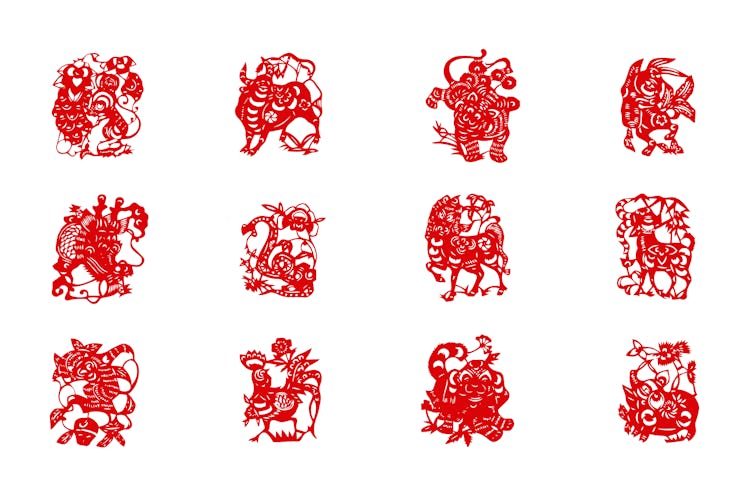
Cat and Rat were supposed to go together. But Cat overslept because Rat had slipped something into his tea the night before.
Then on the way, Rat ran into Ox and they struck up a deal: Ox would carry Rat while Rat would sing for him. With Rat’s encouraging singing, they quickly made it to the finish line. But just as they were crossing over, Rat jumped down and landed in front of Ox, in first place.
Tiger and Rabbit arrived soon after. Dragon could’ve been earlier, but he took a detour to save a village from a flood. Snake arrived at the same time, but he was too small to be seen at first. Horse and Goat traveled together, but Horse was a bit faster.
Monkey, Rooster and Dog arrived together after helping a god in another country. Pig’s home was destroyed by a wolf and he had to rebuild it before joining the race.
Red Underwear Tradition
Your zodiac animal year is called your benming year (本命年—běn mìng nián). During that entire year, you’re prone to catching the attention of demons. The way to protect yourself is to wear red underwear.
It’s believed that before turning 100 days old, infants’ souls can be taken back at any time. So parents would give their babies a lock pendant.
During the Liao Dynasty, the benming year was also known as rebirth. People would celebrate their rebirth with a ceremony conducted by a priestess (or witch). It’s equally dangerous during your rebirth year.
To lock in your luck and soul, make sure you wear red underwear! (And have many pairs, since you must wear them every day.)
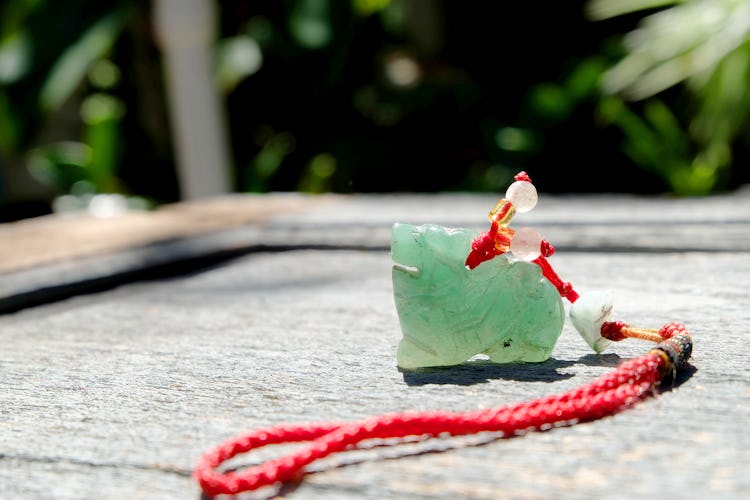
The Swan and the Lantern Festival
The Lantern Festival (元宵节—yuán xiāo jié) is fifteen days after the Spring Festival. It marks the end of Chinese New Year celebrations. As you may guess from the name, everyone lights lanterns for this festival. It’s a beautiful night, but why lanterns?
As the story goes, a heavenly swan was killed by a hunter when it visited the human world. To avenge its death, the Jade Emperor planned to send his knights and burn the earth down.
The lesser gods were horrified at this plan and secretly went to warn the humans. On that night, the humans lit firecrackers and each household hung lanterns. From the heavens, it seemed like Earth was in flames. It tricked the Jade Emperor and humanity was saved from his wrath.
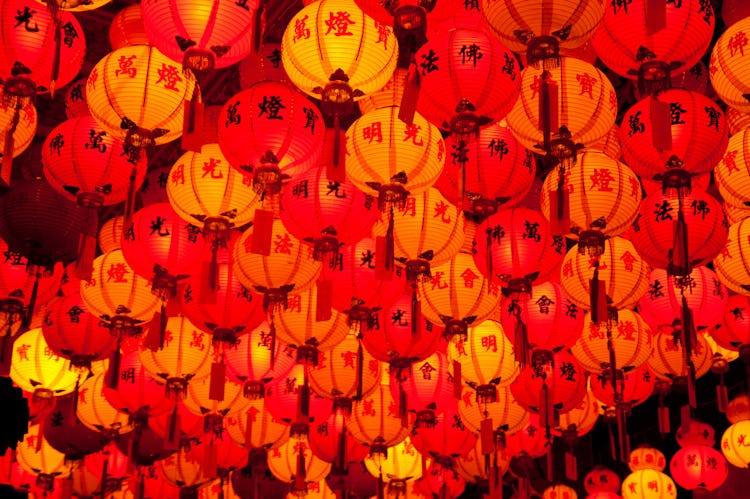
These ten myths are only the tip of the iceberg. There are many more interesting traditions and details about Chinese New Year. Delve deeper and learn more about this ancient and long-lived celebration!


